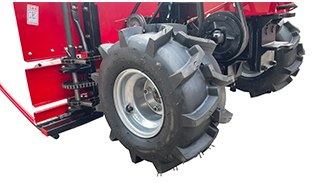ธ.ค. . 23, 2024 11:35 Back to list
Understanding Brake Drum Rust and Its Impact on Vehicle Performance
Understanding Brake Drum Rust Causes, Consequences, and Prevention
Brake drums are crucial components of a vehicle’s braking system, providing the necessary friction required to stop a car. However, they are also susceptible to one of the most common issues faced by vehicle owners rust. Brake drum rust can significantly affect the performance and safety of a vehicle. This article explores the causes of brake drum rust, its consequences, and preventive measures to keep your braking system in optimal condition.
Causes of Brake Drum Rust
Rust forms when iron and oxygen react in the presence of moisture, which is a common occurrence for brake drums as they are typically made from cast iron. There are several factors that contribute to the formation of rust on brake drums
1. Moisture Exposure Brake drums can be exposed to rain, humidity, and even splashes from roads. When vehicles are parked, especially in damp conditions, moisture can accumulate on the surface of the drums and initiate rust formation.
2. Road Salt In many regions, road salt is used to melt ice during winter months. This salt can accumulate on vehicles and accelerate corrosion, making the brake drums particularly vulnerable to rust.
3. Lack of Use Vehicles that are not driven regularly can develop rust more quickly. The absence of heat from braking leads to moisture being trapped on the drums, enhancing the likelihood of rust formation.
4. Poor Maintenance Neglected maintenance and infrequent inspections can allow small signs of rust to grow unchecked. Without regular cleaning and servicing, rust can spread, compromising the brake drum's integrity.
Consequences of Brake Drum Rust
Rust can have several adverse effects on brake drums and overall vehicle safety
brake drum rust

1. Reduced Performance Rust on brake drums can lead to uneven surfaces, causing brake pads to wear irregularly. This can result in a decrease in braking efficiency and performance, making it harder to stop the vehicle quickly.
2. Increased Noise Rusty brake drums can produce grinding or squeaking noises when brakes are applied. This is not only annoying but also indicative of wear that could lead to more serious issues.
3. Safety Hazards The most significant risk of rusty brake drums is the potential failure of the braking system. If the rust weakens the drum enough, it could lead to cracks or even breakage, severely compromising a driver's ability to stop the vehicle and increasing the risk of accidents.
Preventive Measures
Preventing brake drum rust involves several proactive steps that vehicle owners can take
1. Regular Inspections Schedule regular inspections of the braking system to identify any early signs of rust. Catching problems early can prevent more extensive damage and costly repairs.
2. Cleaning Keep the brake drums clean by washing your vehicle regularly. This is particularly important in winter months when road salt is prevalent. A good wash will help remove corrosive substances that contribute to rust.
3. Proper Storage If you have a vehicle that is used infrequently, consider storing it in a dry place, like a garage. Keeping it covered and protected from the elements can minimize moisture exposure.
4. Quality Components When replacing brake drums or pads, opt for high-quality materials that are resistant to corrosion. Investing in durable components can provide better protection against rust.
In conclusion, brake drum rust is a significant issue that should not be taken lightly. By understanding the causes, recognizing the consequences, and implementing preventive measures, vehicle owners can ensure their braking systems remain safe and effective. Regular maintenance and vigilance are keys to preventing rust from compromising vehicle safety and performance.
-
Volvo Brake Drum: OEM Quality, Optimal Safety
NewsAug.27,2025
-
Durable Brake Drum MAZ for Heavy Duty Trucks | High Performance
NewsAug.26,2025
-
FUWA: Premium Quality, Reliable Performance & Innovative Solutions
NewsAug.25,2025
-
Liza Brake Drum: Superior Quality & Performance for Safe Driving
NewsAug.24,2025
-
Iveco Brake Drum | Premium OE Quality for Daily & Eurocargo
NewsAug.22,2025
-
Your Brake Drum Man: Quality & Performance Parts
NewsAug.21,2025
